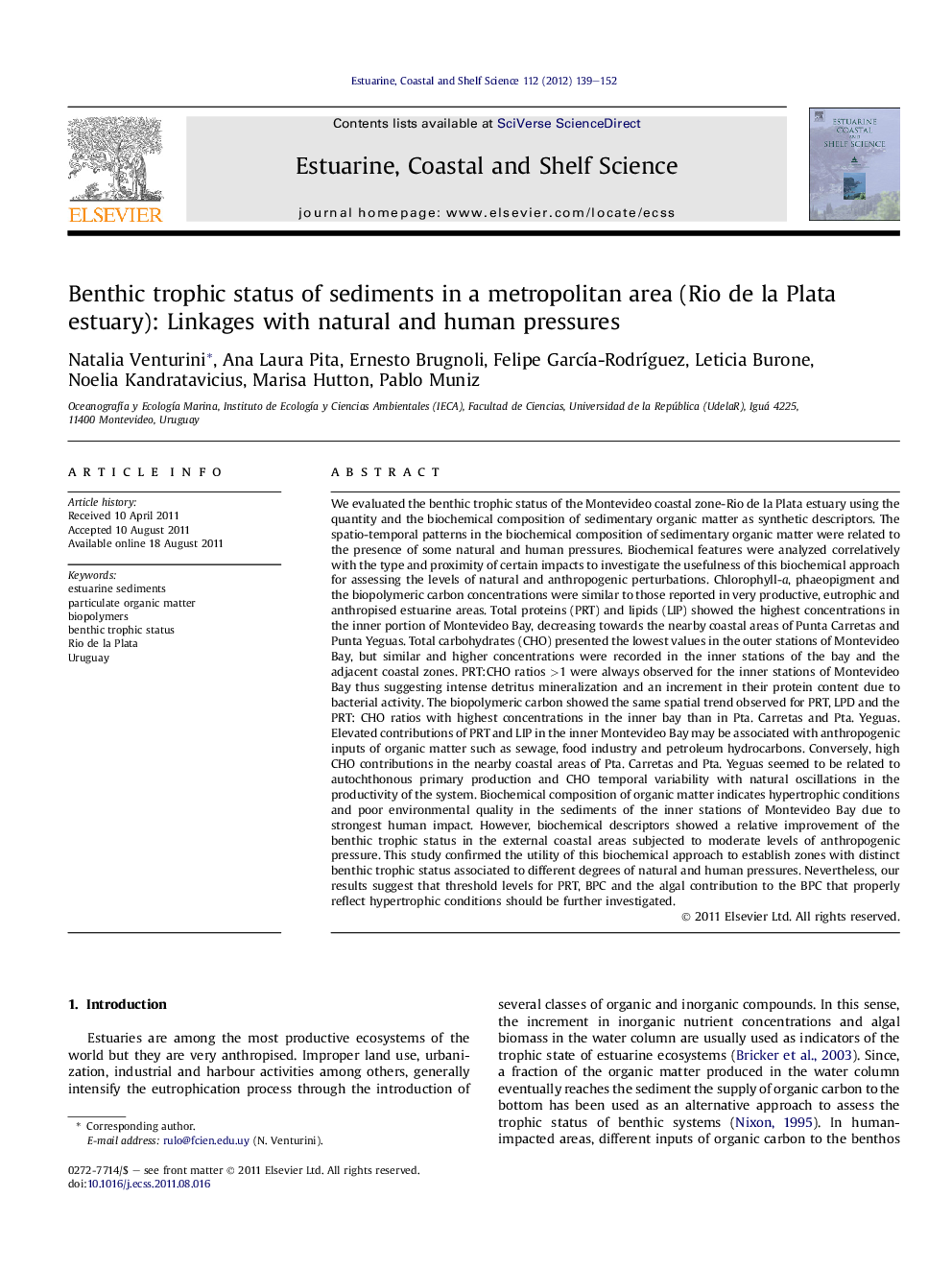| کد مقاله | کد نشریه | سال انتشار | مقاله انگلیسی | نسخه تمام متن |
|---|---|---|---|---|
| 4540060 | 1626683 | 2012 | 14 صفحه PDF | دانلود رایگان |

We evaluated the benthic trophic status of the Montevideo coastal zone-Rio de la Plata estuary using the quantity and the biochemical composition of sedimentary organic matter as synthetic descriptors. The spatio-temporal patterns in the biochemical composition of sedimentary organic matter were related to the presence of some natural and human pressures. Biochemical features were analyzed correlatively with the type and proximity of certain impacts to investigate the usefulness of this biochemical approach for assessing the levels of natural and anthropogenic perturbations. Chlorophyll-a, phaeopigment and the biopolymeric carbon concentrations were similar to those reported in very productive, eutrophic and anthropised estuarine areas. Total proteins (PRT) and lipids (LIP) showed the highest concentrations in the inner portion of Montevideo Bay, decreasing towards the nearby coastal areas of Punta Carretas and Punta Yeguas. Total carbohydrates (CHO) presented the lowest values in the outer stations of Montevideo Bay, but similar and higher concentrations were recorded in the inner stations of the bay and the adjacent coastal zones. PRT:CHO ratios >1 were always observed for the inner stations of Montevideo Bay thus suggesting intense detritus mineralization and an increment in their protein content due to bacterial activity. The biopolymeric carbon showed the same spatial trend observed for PRT, LPD and the PRT: CHO ratios with highest concentrations in the inner bay than in Pta. Carretas and Pta. Yeguas. Elevated contributions of PRT and LIP in the inner Montevideo Bay may be associated with anthropogenic inputs of organic matter such as sewage, food industry and petroleum hydrocarbons. Conversely, high CHO contributions in the nearby coastal areas of Pta. Carretas and Pta. Yeguas seemed to be related to autochthonous primary production and CHO temporal variability with natural oscillations in the productivity of the system. Biochemical composition of organic matter indicates hypertrophic conditions and poor environmental quality in the sediments of the inner stations of Montevideo Bay due to strongest human impact. However, biochemical descriptors showed a relative improvement of the benthic trophic status in the external coastal areas subjected to moderate levels of anthropogenic pressure. This study confirmed the utility of this biochemical approach to establish zones with distinct benthic trophic status associated to different degrees of natural and human pressures. Nevertheless, our results suggest that threshold levels for PRT, BPC and the algal contribution to the BPC that properly reflect hypertrophic conditions should be further investigated.
Figure optionsDownload high-quality image (176 K)Download as PowerPoint slideHighlights
► We used organic matter biochemical composition to assess the benthic trophic status.
► Proteins and lipids were associated with anthropogenic inputs of organic matter.
► Carbohydrates were related with local primary production and associated detritus.
► Montevideo Bay is hypertrophic and the adjacent area outside the bay is eutrophic.
► This approach was useful to relate the trophic state with the degree of human impact.
Journal: Estuarine, Coastal and Shelf Science - Volume 112, 20 October 2012, Pages 139–152